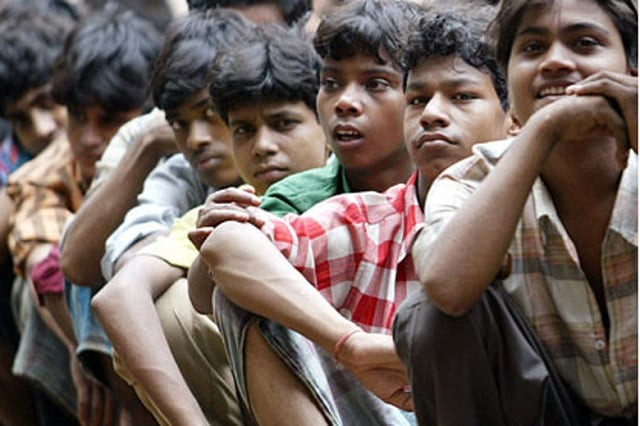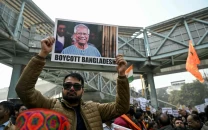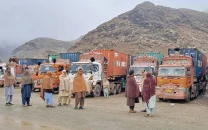10 million slaves go missing from survey in India
Campaigners say more than 20 million Indians are trapped in bonded labour

Police said the children were mainly from the states of Bihar and Uttar Pradesh in northeastern India, and that traffickers had given their impoverished parents 5,000 rupees () as payment for the children. PHOTO: REUTERS/ FILE
The Australia-based Walk Free Foundation released the 2018 Global Slavery Index last week, which said that modern day slavery affects about 40 million people globally, including six in every 1,000 people in India.
Walk Free explained that a change in survey methodology accounted for the missing 10 million slaves reported in its 2016 index.
But campaigners questioned the data, saying that the number of Indians trapped in bonded labor which remains widespread despite a ban since 1976 is far larger than estimated by the Global Slavery Index.
Sold into slavery: India's lost generation of missing children
“This new data could just be interpreted as India tackling the problem well,” said Venkat Reddy of the Mamidipudi Venkatarangaiya Foundation, which works on child rights and slavery issues in India.
“We are diluting the enormity of the problem by not giving the accurate figure.”
A labor ministry official, who could not be identified as he was not authorised to speak to media, described the 8 million figure as “inaccurate, and more of an estimate”.
Campaigners say that more than 20 million Indians are trapped in bonded labor, working in brick kilns, garment factories and other sites, while many more victims of modern slavery work on farms or in family homes.
The Walk Free Foundation attributed its new, lower estimate to a different method of measuring responses to its survey questions.
India cabinet clears first anti-human trafficking bill
The 2018 index included respondents who reported experiencing slavery “on any given day” in 2016 alone, while the previous survey recorded victims who were exploited at any time during the previous five years.
The new calculation also included only those who experienced slavery inside India, which eliminated anyone who suffered exploitation abroad as a migrant laborer.
Reports of abuse and exploitation are particularly common from the six Gulf states - Bahrain, Kuwait, Qatar, Saudi Arabia, United Arab Emirates and Oman - where 6 million Indian migrants work, according to government data.
Fiona David, the Walk Free Foundation’s executive director of global research, said efforts to tackle slavery in India should use the latest research.
India most dangerous country for women with sexual violence rife: poll
“The figure shows the problem is enormous. We have a better picture of it now,” she said.
But Chandan Kumar, of the National Campaign Committee for Eradication of Bonded Labour, said Walk Free’s calculation was an “underestimate” that could “create confusion”.
“The Indian government itself said it would rescue 18 million bonded workers by 2030. And this does not include victims of forced marriage and sexual slavery, so the numbers are clearly much higher,” Kumar said.
Those who study modern day slavery have for years noted challenges to calculating an accurate number. These include different definitions of slavery, as well as a lack of data from Gulf states and conflict-hit nations like Libya and Syria.



















COMMENTS
Comments are moderated and generally will be posted if they are on-topic and not abusive.
For more information, please see our Comments FAQ